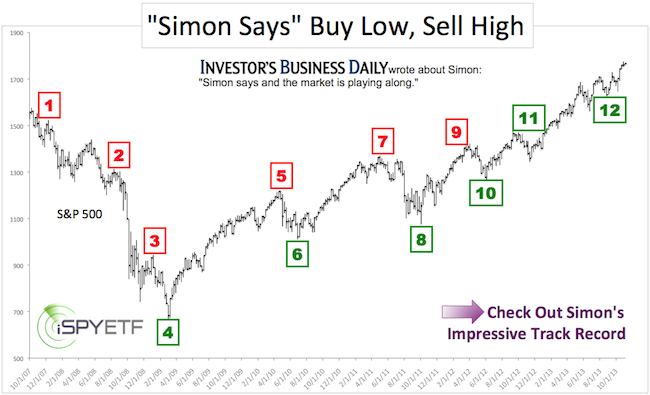Since the beginning of the year, the S&P 500 hasn’t gone anywhere. Here’s why:
Limited Up Side
The S&P 500 (SNP: ^GSPC) has been struggling to break through technical resistance. The dashed red trend channel and solid red Fibonacci resistance have clipped the wings of the S&P 500 every time it staged an attempt to fly above resistance.
The first chart shows that aside from the January/February dip, the S&P 500 has been restricted to a range defined by predetermined support/resistance levels.

The second chart provides the long-term context needed to make sense of the highlighted support/resistance levels.

Limited Down Side
Obviously, the S&P 500 (NYSEArca: SPY) has bounced from technical support several times, but there’s been another reason why the S&P 500 hasn’t broken down.
It’s the ‘media put.’ Unlike the ‘Bernanke put’ (now Yellen put), which is cash driven, the ‘media put’ is information driven.
The media is the last entity qualified to dispense financial advice, but that’s exactly what they do. Unfortunately, enough investors are listening making the media a contrarian indicator.
Here’s some of the ‘advice’ (headlines) the media has been giving:
Yahoo Talking Numbers: “Why sell in May adage makes sense this year” – April 28
CNBC: “This chart says we’re in for a 20% correction” – May 1
CNBC: “Bubble talk catches fire among big-money pros” – May 5
The S&P 500 rarely dances to the tune of the media’s whistle, that’s why the Profit Radar Report expected a pop and drop combo to fool the ‘here comes the crash’ crowd.
The May 7 Profit Radar Report stated that: “A false pop to 1,900 – 1,915 would shake out the weak bears and set up a better opportunity to go short.”
When Will the Range Break?
The pop to S&P 1,902 on May 13 certainly rattled the cage of premature bears. A break below key support (key levels outlined in the most recent Profit Radar Report) may usher in the long-awaited 10%+ correction.
Could the correction morph into something bigger?
One indicator with the distinct reputation of signaling the 2000 and 2007 meltdowns is at the verge of triggering another ‘crash signal.’ But there’s one caveat.
Here’s the full intriguing story:
A Look at the Risk Gauge that Correctly Signaled the 2000 and 2007 Tops
Simon Maierhofer is the publisher of the Profit Radar Report. The Profit Radar Report presents complex market analysis (S&P 500, Dow Jones, gold, silver, euro and bonds) in an easy format. Technical analysis, sentiment indicators, seasonal patterns and common sense are all wrapped up into two or more easy-to-read weekly updates. All Profit Radar Report recommendations resulted in a 59.51% net gain in 2013.
Follow Simon on Twitter @ iSPYETF or sign up for the FREE iSPYETF Newsletter to get actionable ETF trade ideas delivered for free.

|